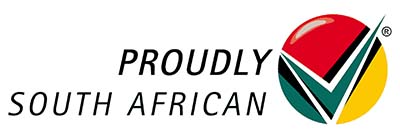Conducting a fixed asset audit is essential for any organization aiming to maintain accurate financial records and comply with regulatory requirements.
For an asset management company like Synergy Evolution, ensuring that all fixed assets are properly accounted for and managed is crucial to maintaining financial integrity and operational efficiency.
Here are some top tips to help you prepare effectively for your next fixed asset audit:
1. Understand the Scope of the Audit
Before starting the audit preparation, clarify the audit scope with your auditors.
Understand which assets will be included, the audit’s objectives, and the specific criteria auditors will use.
This ensures that your efforts are focused on the most relevant areas, allowing you to meet the audit requirements efficiently.
2. Organize and Update Asset Records
Maintaining complete and up-to-date asset records is essential for a smooth audit. Ensure the following information is accurate:
- Acquisition Dates: Record the purchase date of each asset.
- Depreciation Information: Track the depreciation method used and accumulated depreciation for each asset.
- Asset Location: Maintain precise location details to assist in physical verification.
- Tagging and Identification: Use asset tags or unique identifiers to track each asset.
3. Conduct a Preliminary Internal Audit
Performing an internal audit before the external audit helps identify and resolve discrepancies early. Check for:
- Missing or unaccounted-for assets
- Inaccurate depreciation calculations
- Misclassified assets By resolving these issues beforehand, you can avoid unnecessary audit findings.
4. Reconcile Fixed Asset Register with General Ledger
Ensure your fixed asset register is reconciled with the general ledger. Any discrepancies between the two can lead to audit flags.
Regular reconciliation is key to maintaining consistency and accuracy in your financial reporting, reducing the risk of audit issues.
5. Review and Document Policies and Procedures
Ensure your fixed asset management policies and procedures are well-documented and up to date. This includes:
- Asset Capitalization Thresholds: Document the monetary value at which an item becomes a capital asset.
- Depreciation Policies: Outline your depreciation methods and schedules.
- Asset Disposal Procedures: Specify how assets are retired or disposed of. Clear documentation demonstrates compliance with internal controls and regulatory standards.
6. Verify Physical Existence of Assets
Conduct a physical count of your assets to verify their existence and condition. Compare this with your asset records to identify any variances. This process ensures that all assets are accounted for and properly maintained, improving the accuracy of your records.
7. Prepare Supporting Documentation
Gather all necessary supporting documents for the assets, such as:
- Purchase invoices
- Maintenance records
- Disposal records
- Lease agreements Having these documents readily available helps auditors verify asset information quickly, reducing the time required for the audit.
8. Train Your Team
Ensure your team is well-prepared for the audit by providing training on:
- The audit process
- The importance of accurate record-keeping
- How to respond to auditors’ queries A knowledgeable team can streamline the audit process and help resolve issues efficiently.
9. Address Historical Issues
If there were previous audit findings, ensure that any issues have been resolved. Document the actions taken to correct these issues, and be prepared to discuss them with auditors. Addressing historical issues demonstrates your commitment to continuous improvement and compliance.
10. Utilize Asset Management Software
Invest in a robust asset management software solution to streamline asset tracking and management. Asset management software can:
- Automate depreciation calculations
- Generate audit-ready reports
- Provide real-time asset data This reduces manual work, enhances accuracy, and makes audit preparation more efficient.
11. Maintain Open Communication with Auditors
Establish and maintain open lines of communication with your auditors throughout the audit process.
Promptly address their queries and provide the information they need.
Regular communication can help resolve potential issues quickly and minimize misunderstandings, leading to a smoother audit experience.








